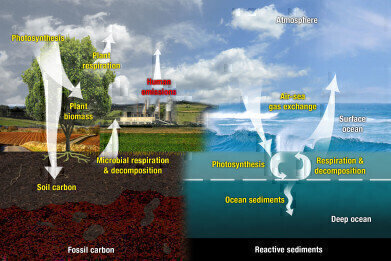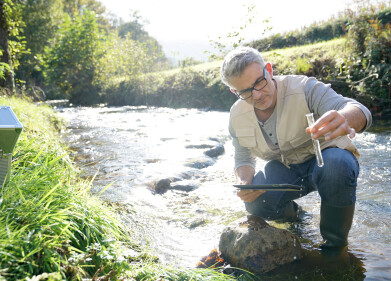Soil Testing
Elemental Analysis Assists Monitoring of the Carbon Cycle
Oct 10 2013
Exeter Analytical (UK) reports that a growing number of laboratories are using its Model 440 CHN elemental analyser to accurately determine percentage organic and inorganic carbon levels at different parts of the carbon cycle.
The carbon cycle is the biochemical process by which carbon is exchanged among the biosphere, pedoshere, geosphere, hydrosphere and atmosphere of the Earth. Along with the nitrogen cycle and the water cycle, the carbon cycle comprises a sequence of events that are key to making the Earth capable of sustaining life.
Exeter Analytical has published an optimised technique for direct determination of total carbon, organic and inorganic carbon in marine sediments. The Model 440 CHN Elemental Analyser is able to provide accurate results expressed in micrograms of total Carbon and Nitrogen detected. Then after sample acidification the organic carbon content can be determined. Total carbon minus organic carbon gives the inorganic content. Identification of marine sediment contamination issues and subsequent tracking of the success of remedial actions via monitoring levels of total, organic and inorganic carbon levels is a technique of considerable importance.
Organic and inorganic carbon monitoring is also very important in soil analysis because it enables us to understand and estimate potential responses of soil carbon to global changes in the future. Carbon can be determined in both its inorganic and organic forms via acid pre-treatment or temperature differential measurement using an Exeter Analytical Model 440 Elemental Analyser.
The Exeter Analytical Model 440 is a static combustion CHN elemental analyser, with a unique horizontal furnace design, which enables easy removal of sample ash between each marine sediment or soil analysis. Consequently one combustion tube will analyse in excess of 1000 sediment / soil samples without the need for removal and cleaning. In addition the Model 440 provides the capacity to process filters which are used in applications for river/oceanographic analysis. Filters up to 47 mm in diameter can be processed in one analytical cycle. By comparison other elemental analysers, employing vertical furnace designs, need cleaning after as little as 20 samples and larger filters have to be sub-sampled several times and then corrective calculations made to enable analysis. Effectively eliminating troublesome residue build-up the gas flow characteristics of the Model 440 analyser are superior to other elemental analysers thereby providing longer-term calibration stability as well as enhanced accuracy and precision for measured sample data. As the Exeter Analytical Model 440 provides complete control over combustion parameters it is able to reproducibly achieve 100% combustion with the widest range of marine sediment and soil samples.
Digital Edition
AET 28.4 Oct/Nov 2024
November 2024
Gas Detection - Go from lagging to leading: why investment in gas detection makes sense Air Monitoring - Swirl and vortex meters will aid green hydrogen production - Beyond the Stack: Emi...
View all digital editions
Events
Jan 20 2025 San Diego, CA, USA
Carrefour des Gestions Locales de L'eau
Jan 22 2025 Rennes, France
Safety, Health & Wellbeing LIVE
Jan 22 2025 Manchester, UK
Jan 25 2025 San Diego, CA, USA
Jan 29 2025 Tokyo, Japan



















